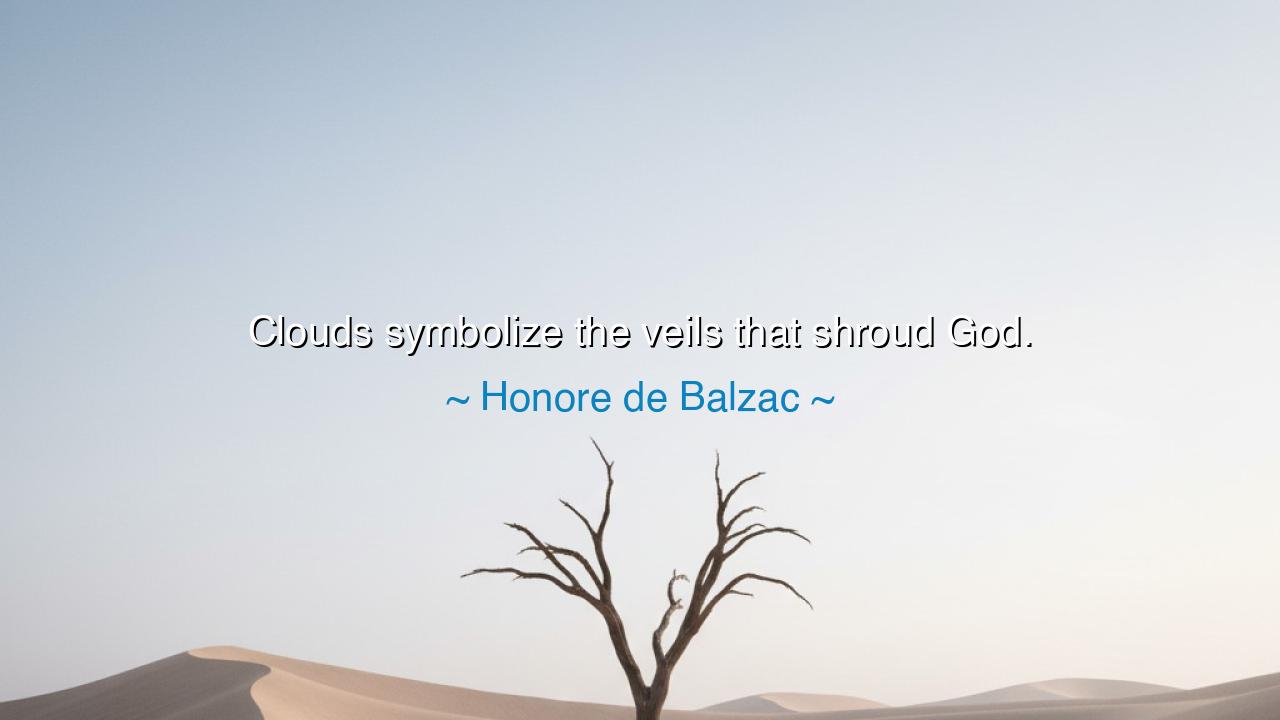
Clouds symbolize the veils that shroud God.






Hear the solemn words of Honoré de Balzac, who wrote: “Clouds symbolize the veils that shroud God.” This is no casual metaphor, but a vision of the divine mystery that has haunted humanity since the dawn of time. For just as clouds conceal the sun yet also prove its presence by their very glow, so too is the Eternal hidden from our direct sight, yet revealed in the veils that cover Him. The veils remind us that there are truths too radiant for mortal eyes, mysteries too vast for the human heart to bear at once.
The cloud has long been the emblem of concealment and revelation. In the Hebrew scriptures, the presence of God descended upon Sinai in a cloud, and the people trembled, for His face could not be seen. In the Christian gospels, a bright cloud overshadowed the disciples at the transfiguration, and the divine voice spoke from its midst. In ancient Greece, Zeus clothed himself in thunderclouds, and in India, the gods often descended veiled in mists. Thus, across nations and ages, men have seen clouds not as emptiness, but as sacred curtains through which the Infinite whispers.
To gaze upon God directly, said the sages, would be death, for the soul is not yet strong enough to endure the full brilliance of the divine. The veils are therefore mercy as well as mystery. Just as the eye cannot stare upon the sun without blindness, so too the spirit cannot yet behold the Source of all light. The clouds are both barrier and bridge, protecting the seeker even as they hint at the glory behind them. Balzac, a man of letters who pondered the unseen forces guiding life, understood this deeply: the divine is not absent but veiled, not silent but hidden in mystery.
History offers us examples of this truth. Consider Moses upon the mountain. He entered the cloud and returned with his face shining so brightly that his people could not bear to look upon him. The divine fire had touched him, but it had been tempered by the veil of the cloud. Without that covering, he could not have survived the encounter. The clouds are therefore not denial, but preparation—guardians that teach us patience until we are ready for clearer vision.
The meaning is profound: life itself is full of veils. We do not understand why suffering comes, why fortune changes, why death takes the ones we love. These are the clouds that cover the face of the Eternal. Yet behind them, Balzac assures us, lies not emptiness but God. The veils are not walls but signs—that there is something greater, too vast to be comprehended at once. To accept the clouds is to accept mystery, to walk by faith rather than sight.
The lesson is clear: do not despair when God seems hidden, when life is clouded by uncertainty. Remember that the clouds are the very symbols of His presence, veils placed between us and the unbearable brilliance of truth. In times of doubt, the veil itself becomes the reminder that there is something to be revealed. Faith is not the denial of clouds, but the trust that beyond them lies the sun.
What, then, are the practical actions? Embrace mystery with humility. When life grows dark and the heavens are covered, resist the temptation to think you are abandoned. Instead, treat the clouds as teachers, veils meant to strengthen patience, deepen trust, and prepare the heart for greater vision. Seek meaning in the hidden, not just the revealed. Practice contemplation, prayer, or quiet reflection, allowing the veils to become symbols of the unseen presence that walks beside you.
Thus, Balzac’s words echo through time: “Clouds symbolize the veils that shroud God.” Accept the veils, O seeker, for they are not barriers to truth but preparations for it. Just as clouds one day part to reveal the sun, so too will the veils of mystery fall away, and the soul will behold the Eternal face to face. Until that day, walk with reverence beneath the clouds, for they are the garments of God.






AAdministratorAdministrator
Welcome, honored guests. Please leave a comment, we will respond soon